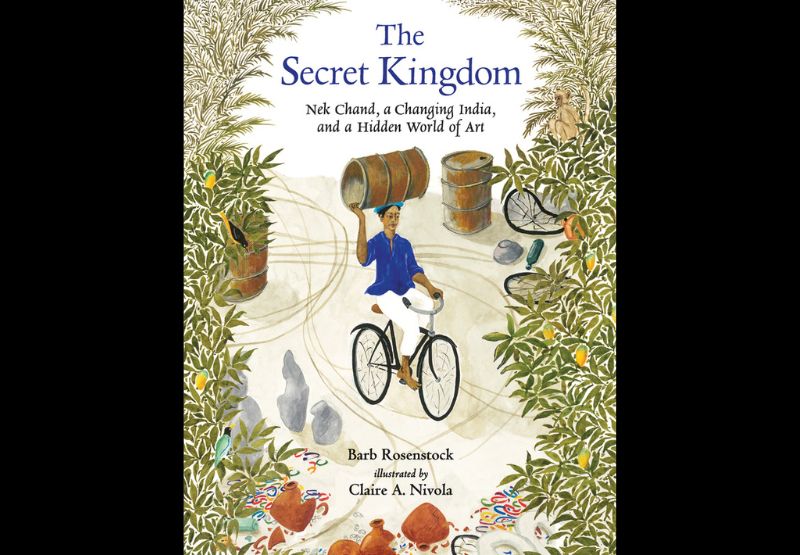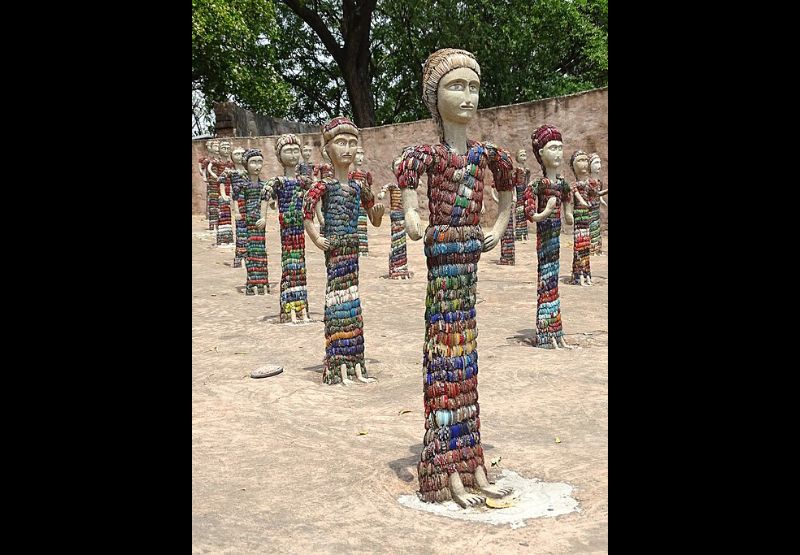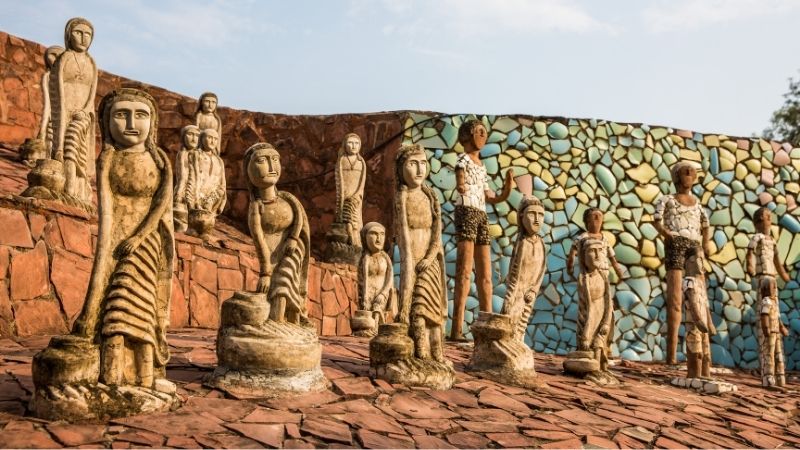Nek Chand – the ‘Rock’star
Editor’s note: This story about Nek Chand the rock star (literally!), the widely recognised self-taught artist who built his magical kingdom, the famous Rock Garden in Chandigarh, was first published on The Heritage Lab—a wonderful resource of stories on cultural heritage, art, museums and lots more. You can find other wonderful essays on art and culture over at their website.
In the second half of the 20th century, the first planned city of India, Chandigarh, was being moulded under the capable leadership of Swiss-French architect Le Corbusier. The city was in a mad rush of industrialisation, complete with cacophony of drills and bulldozers and a skyline made of cranes. But in a small corner at the edge of the city a member of Corbusier’s own team was creating a little slice of paradise—Nek Chand was crafting his enchanting rock garden!

Nek Chand’s secret
Nek Chand was born on 15th December 1924 in Shakar Garh Tehsil in pre-partition Pakistan. During partition, his family crossed the border to settle in India. Taking advantage of a government program to help refugees, he became one of the road inspectors assigned to the Public Works Department (PWD) in 1951. Amid the echoes of construction sites, he found his purpose—to build a hidden utopia, far removed from the discordant noises of city life.
For 18 years, he traversed the countryside on his humble bicycle, collecting bizarre things. He plucked rocks and stones from the foothills of the Shivalik, and the silty banks of Sukhna Cho, Patiala Rao and Ghaggar rivers, and collected glass, bangles, crockery, mosaic stones from villages. Another key component was the debris from the 24 villages that had been demolished to make way for the new city. In using these materials, he gave these villages a new life, and ensured their legacy lived on in some way.
 In 1965, he made a conscious move to begin building his garden. The choice of location was unusual—a gorge near Sukhna lake at the edge of the forest. This area was technically PWD land and located near the PWD stores that Chand was in charge of. In using this land Chand was wilfully ignoring the rules and engaging in illegal activity! But for him, this project was well worth the risk.
In 1965, he made a conscious move to begin building his garden. The choice of location was unusual—a gorge near Sukhna lake at the edge of the forest. This area was technically PWD land and located near the PWD stores that Chand was in charge of. In using this land Chand was wilfully ignoring the rules and engaging in illegal activity! But for him, this project was well worth the risk.
The secret’s out!
According to one story, in 1969 Chand became nervous about his illegal activities and approached the city’s chief architect MN Sharma to come clean. But Sharma didn’t have the heart to destroy the magical kingdom that Chand had created. Instead, he advised him to continue his work in secret!
Later, when a team of government workers stumbled upon the site, a report was made to MS Randhawa (Chief Commissioner of Chandigarh). As it turns out, Randhawa too was enchanted by Nek Chand’s world. In fact it was Randhawa who named it the ‘Rock Garden’. It finally opened to the public on 24th January 1976, and by the 1980s both the Rock Garden and its creator became immensely popular. Nek Chand’s once clandestine garden was visited by over 2000 people daily!

What inspired Nek Chand to build this garden?
Childhood is one of the dominant inspirations of Chand’s work according to scholars. Weaved into a magical landscape, his first sculptures are straight out of a child’s dreamscape.
The roots of Nek Chand’s extraordinary creativity stem from his childhood. From the building of fantasy mud cities by the side of a river bank, from the stories of wondrous kings and queens told to him by his mother, from dolls and figures made from broken bangles found on the ground by market stalls, from colourful scarecrows to ward off birds from his father’s crops.
- John Maizels, Founder of Nek Chand Foundation

Another experience that impacts his work is the partition. His work is a recreation of his lost ancestral home, transposed into his secret haven. This deep sense of loss led him to create desolate worlds populated by frozen characters. Chand’s sculptures could always stay connected to their roots. Maybe in a way Chand envied their immobility.

Although they may be fixed to their land, the sculptures only narrowly avoided the fate of Ozymandias! Between 1988 and 1990 there were several attempts to demolish sections of the Rock Garden. But Chand managed to get the people on his side. Public outcry and support (to the extent of forming human shields around the garden!) ensured their survival.
It is through the effort and support of many individuals and public groups that the Rock Garden still exists in Chandigarh! It is a testament to one man’s determination and willpower, but also a display of the power of a conscientious society.
Think a little deeper
What do you think is the third factor inspiring Chand’s work? Think about the contrasting city being built side-by-side and the sacrifices made for development. What does the choice of raw material tell us?
Do you see any similarities between Chand and Ramkinkar Baij’s work? Think about the materials used and the themes picked up by both artists? How does industrialisation affect different communities?
A new garden in Palakkad, Kerala
By the mid-1990s Nek Chand became an international icon in the world of folk sculpture. This is when Chand set upon replicating his pet project in Malampuzha, albeit on a smaller scale. Created between 1993 to 1995, the Kerala Rock Garden is artistically identical to the one in Chandigarh. It is built from the same materials and the sculptures, full of magical exuberance, follow the same playful juxtaposition.

The Kerala Rock Garden also has some elements specific to the region. Dotted around the site you will find a Nambudiri with his Marakkuda (umbrella), a Kathakali dancer in his regal attire, and many moustachioed Malayali men in mundus! It also features scenes from traditional martial art forms like Theyyam and Kalarippayattu, and dance forms like Thiruvathirakali.
As a self-trained artist, Nek Chand is revered as a luminary in the Outsider Art movement, and serves as proof that artists and their creations can flourish outside the conventional structures of the art industry. His clandestine “poetry with rocks” has turned discarded scraps and debris into beautiful Edens at the fringes of urban life. His story serves as an invitation, entreating us to venture beyond the expected to find magic in the mundane.



 souk picks
souk picks